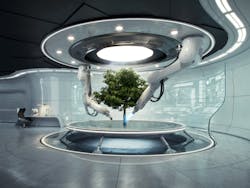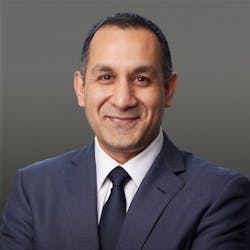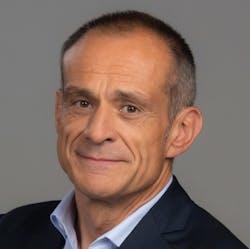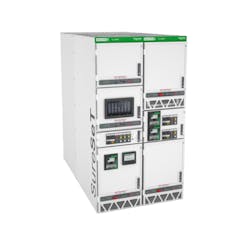Responding to Disruption with Sustainable Technology and Leadership
All disruptive change goes through three phases: first it’s considered crazy; then it’s considered dangerous; and finally, it’s accepted as something that obviously needs to be done.
This is how Aamir Paul, president, Schneider Electric North America, put into perspective the changes industry is facing around digital transformation and sustainability during the company’s Innovation Summit 2022 in Las Vegas. He added that, if you wait until it’s obvious, it may be too late to react. “And it’s already obvious,” he said, “so we have to accelerate. What we thought we could do in years, we have to do in months.”
“The world will be much more electric in future than it is today,” said Tricoire. The world’s use of electricity has been growing by five terawatt hours every 10 years for the past couple of decades, he noted, but that will double to 10 terawatt hours in 2020-2030 and then quadruple to 20 terawatt hours between 2030-2040.
“This is possible because we can now connect everything,” said Tricoire. “And the blood of this transition is data.”
Creating the toolbox
In response to these changes, Schneider Electric has identified five integration steps it considers essential to industrial efficiency:
1. Align energy and process automation efficiency;
2. Connect every end point on shop floor to the cloud for data storage and analysis;
3. Design and build from the start with a view toward future operations and maintenance in mind;
4. Connect each facility to a unified operations center for broad visibility insights; and
5. Move from opportunistic supply chain connections to sustainable and integrated supply chains.
Tricoire noted that Schneider Electric’s Ecostruxure, Aveva’s software, and OSISoft’s Data Hub (now called Aveva Data Hub) can be used to connect operations, systems, and facilities to address all five of these steps by delivering full data transparency.
Schneider Electric can provide this array of technology through Aveva’s acquisition of OSISoft in 2021 and Schneider Electric’s pending acquisition of Aveva, which is expected to be finalized in 2023.
70% of current carbon emissions can be removed today with existing technology.
“We’ve created a toolbox to make this possible, Tricoire said. “And the first priority is to aggregate all data from your operations in one specialized repository that makes it easy to maintain at scale.”
He said OSISoft Data Hub is this “specialized repository” to connect all legacy devices, including building automation, control systems, and data centers. Having all data aggregated in this way enables developers to create their own software as needed, deliver augmented reality to operators and maintenance personnel operators, and gives them the ability to use additional software from any source. The data analytics and visualization offered by OSISoft Data Hub is agnostic (as to the source of the data), cloud-based, and open, which means it can be used to build digital twins not just for your machines or plant, but for an entire enterprise with Ecostruxure as well as deliver a plug-and-play architecture for process controls and Internet of Things connectivity.
Technology is just one piece of the puzzle
Given the availability of technology to address the core issues facing industrial businesses today, Paul made it clear that technological capability is no longer a barrier for companies adapting to the disruptive changes they face. “The technologies needed to address these changes already exist,” he said. “Instead, it’s a leadership issue to create the culture change needed to respond.”
Donovan noted that, prior to COVID, Moderna was a relatively small company—with just a few hundred employees in 2019—developing mRNA technology for flu vaccines. Now, just three years later, they employ nearly 4,000 people.
Highlighting the speed at which Moderna grew, Donovan said Moderna went public in 2018 and built its first factory in 2018 with LEED concepts in mind. “Now we’re looking to build out new factories with net zero in mind. Part of our culture is to push past what’s considered possible and act with urgency. Some companies creating vaccines have 15-year timelines, we did it in 11 months.”
About the Author
David Greenfield, editor in chief
Editor in Chief

Leaders relevant to this article:




